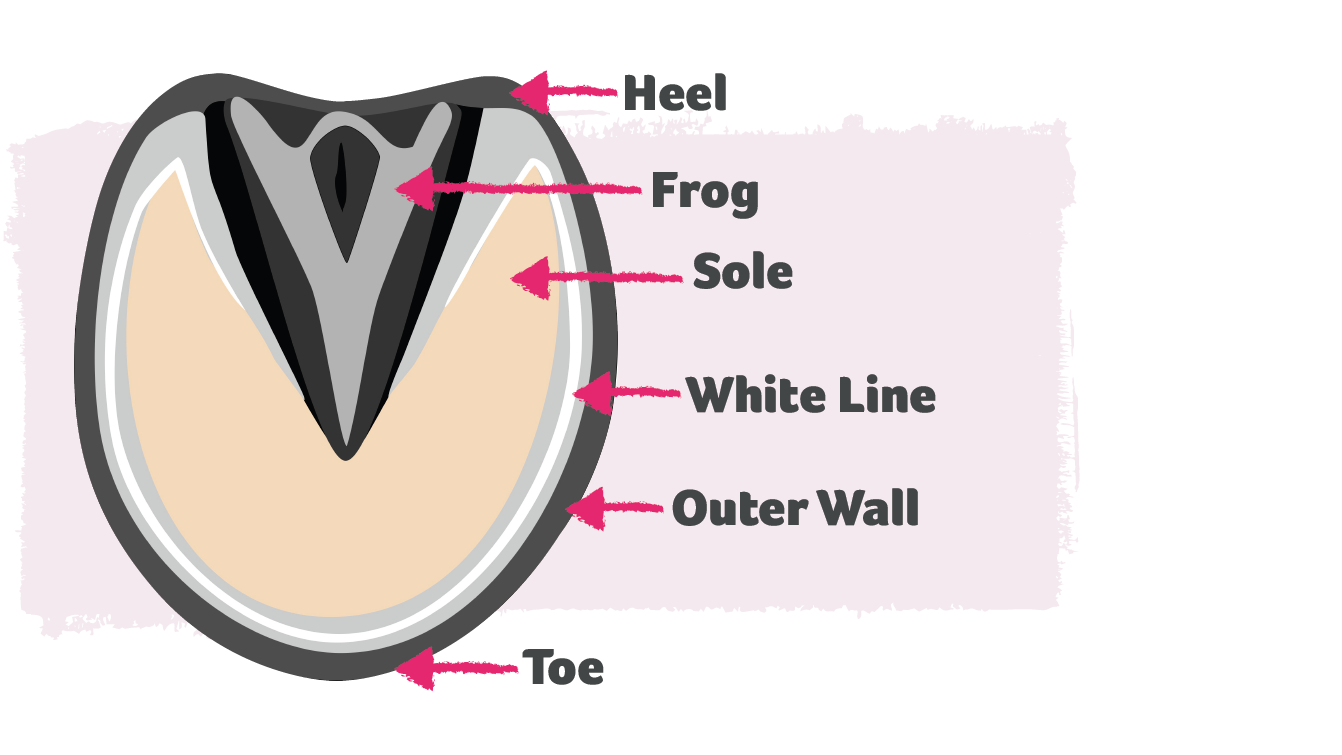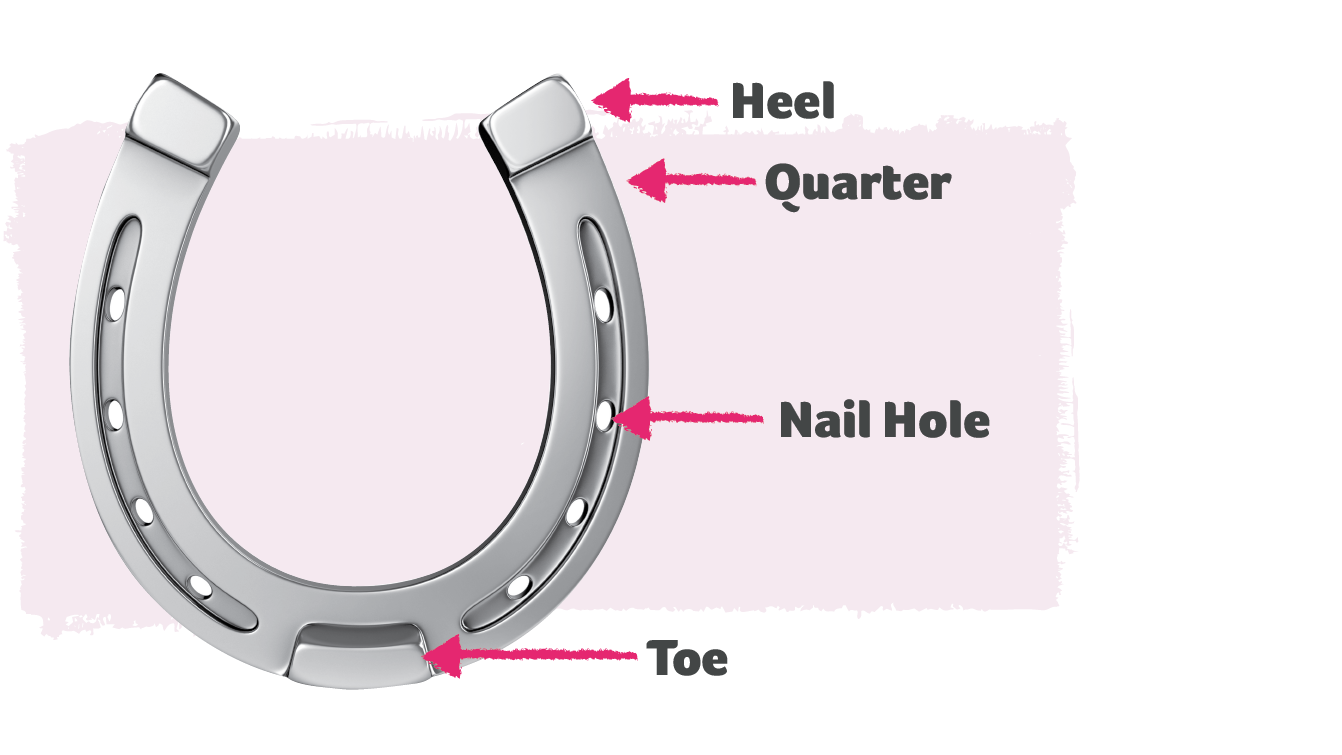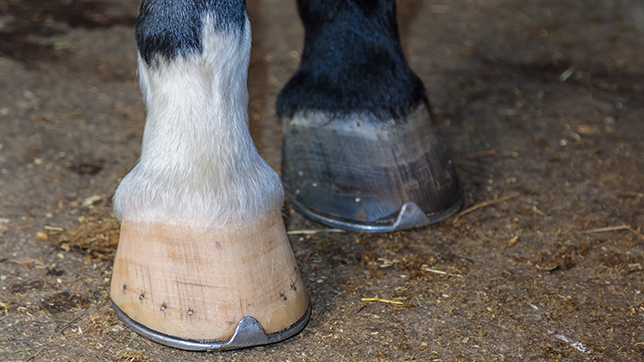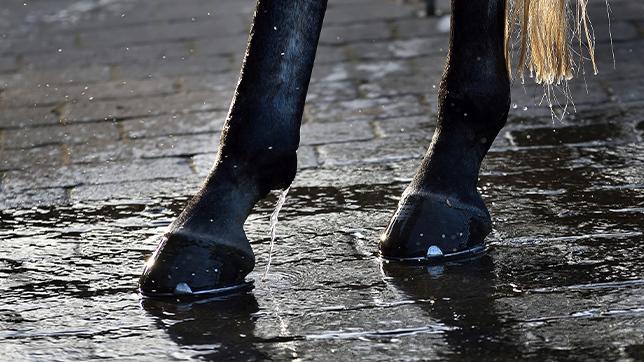10th October 2023
In the wild, horses manage the growth of their hooves by travelling around 25 miles every day across several types of terrain.
However, our lucky steeds don’t need to travel to find food and water, which is why humans invented horseshoes.
Let’s explore the reasons your horse may need shoes…
About your horse’s hoof
Did you know? Your horse’s hoof is made of the same stuff as a rhino’s horn!
Horse hooves contain keratin, a protein that’s also found in your nails and hair. A horse’s hoof grows quickly, and it is important hooves are cared for properly.
Like all good sayings, there’s a reason for the phrase, “no foot, no horse”. Healthy hooves are essential for your horse’s wellbeing.
It’s vital you look after your horse’s hooves correctly. Some of the steps you can take to care for your horse’s hooves include:
- Feeding your equine friend the right diet.
- Picking their hooves out daily.
- Booking regular farrier appointments.
- Using farrier-approved hoof dressings every so often.
The design of your horse’s hoof helps them achieve all the amazing activities you enjoy together, from galloping across a field to jumping a course.
There are sensitive and insensitive parts of the hoof.
The triangular, tough yet spongy ‘frog’ (said to be called that because it looks a bit like a squashed frog!) is a sensitive section of the hoof and is essential for your horse’s circulation, as well as being a shock absorber. Whereas the ‘outer wall’ of your horse’s hoof is insensitive, like our fingernails.

Basic shoeing process
Please note: The following process of shoeing applies to one type of farriery practice in the UK and will differ depending on the needs of each, individual horse.
The person responsible for shoeing your horse is called a farrier, a skilled craftsperson whose job can be traced back to before the Romans!
Step 1: The farrier will check your horse’s hoof health and trim the hoof, before taking measurements for a new shoe.
Step 2: Depending on your horse’s needs, the farrier will use a ‘hot shoeing’ method (heating shoes to shape them precisely to your horse’s hooves) or ‘cold shoeing’ technique (hammering shoes into shape).
Cold shoeing is best for young horses, those sensitive to the smoke created by hot shoeing, and horses who panic during the shoeing process due to past experiences.
Step 3: Finally, your farrier will attach the shoe to your horse’s hoof using nails. The farrier should be extremely careful to ensure nails stay in the insensitive outer section of your horse’s hoof, before tidying up the hoof and horseshoe.
To find a farrier, visit the Farriers Registration Council.
 Reasons your horse might need shoes
Reasons your horse might need shoes
Just as each person is unique, every horse has individual needs, too. Some horses have shoes, while others don’t need them.
1.) Roadwork
If your equine’s exercise routine requires roadwork, they’re more likely to experience concussion that may possibly lead to pain (like ‘percussion’; if you constantly hit a drum, it’ll give you a headache!).
A lot of roadwork can cause your equine companion to wear their hooves down quickly, too.
While it’s better to work your horse on different surfaces, having your horse shod (meaning they’ve already had their shoes fitted) by an experienced farrier can limit the negative impacts of roadwork.
Some of the other surfaces your horse could be exercised on, to limit the negative effects of roadwork, include:
- Safe bridlepaths.
- Unmuddied grass.
- An arena.
2.) Hacking along stony bridlepaths
Do you and your equine enjoy exploring new bridlepaths? Stony or uneven ground can cause your horse’s hooves to be broken down more quickly. Wearing shoes can protect hooves from tough terrain.
3.) Conformation
Every equine is beautiful, though some might have minor faults in the shape of their legs that could cause long-term lameness. Talented farriers can craft special shoes to ease much of the discomfort your equine experiences due to unusual conformation (the way a horse is ‘designed’ by nature).
4.) Naturally brittle hooves
Brittle and crumbling hooves can be a struggle for some horses and their owners.
Sometimes, it doesn’t matter how well you look after your horse’s hooves, they still get damaged easily. Weather conditions don’t help horses with brittle feet, since dry summers and wet winters make them prone to problems like hoof abscesses.
Although shoes aren’t always suitable for horses with brittle hooves, your friendly farrier will recommend shoes as a solution if that’s what’s best for your horse.
5.) Recovery from illness or injury
Horses who’ve had illnesses, like laminitis, or injuries affecting their hooves may need specially designed shoes to support their recovery.
Depending on the design, remedial shoes provide support where your horse needs it most.
Does it hurt to have horseshoes fitted?
As mentioned, your equine companion has sensitive and insensitive sections in each hoof. The sensation of having a shoe put on is a little like tapping the end of your fingernails. Horses can feel vibrations made by the hammer as it drives nails into insensitive parts of the hoof, but they should never feel any pain.
Research into shoeing horses has been ongoing for thousands of years. Also, farriers undergo four years of intense training to learn how to safely and correctly fit shoes to your horse without hurting them.
All farriers in the UK must be qualified and registered with the Farriers Registration Council (FRC).
How often do horseshoes need to be replaced?
While it can take around 12 months for a hoof to completely renew, your horse’s hooves grow around quarter of an inch every month!
So, farrier appointments are usually every 6-8 weeks (although this can vary, depending on a horse’s individual needs).
It’s important your horse’s shoes fit correctly, aren’t loose, and that their hoof hasn’t overgrown the shoe. If your equine friend seems in pain due to their shoes, contact your farrier or vet immediately.
Front shoes

Hind shoes

Are there different types of horseshoes?
Yes, there are many different types of horseshoes. For example:
- Standard steel concave shoes (used for most riding horses).
- Lightweight aluminium shoes (used for racehorses).
- Heartbar shoes (for heel support).
- Plastic shoes (for delicate hooves).
Only your farrier or vet will be able to advise as to the best type of shoe for your horse.
If you’re interested in finding out more about the diverse range of shoes available, Brook Vets have created this great guide to horseshoes.
For options other than traditional shoeing, visit our article about alternatives to shoeing your horse.
Read our horse blog!
If you found this article useful, why not visit our horse blog for more news, insight and opinion pieces?
Need horse insurance?
Horse insurance can help cover the cost of veterinary treatment if your horse gets injured or falls ill.
